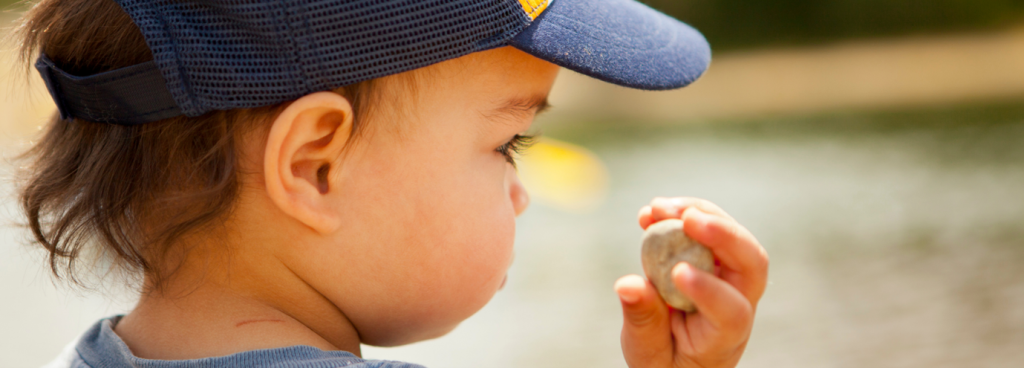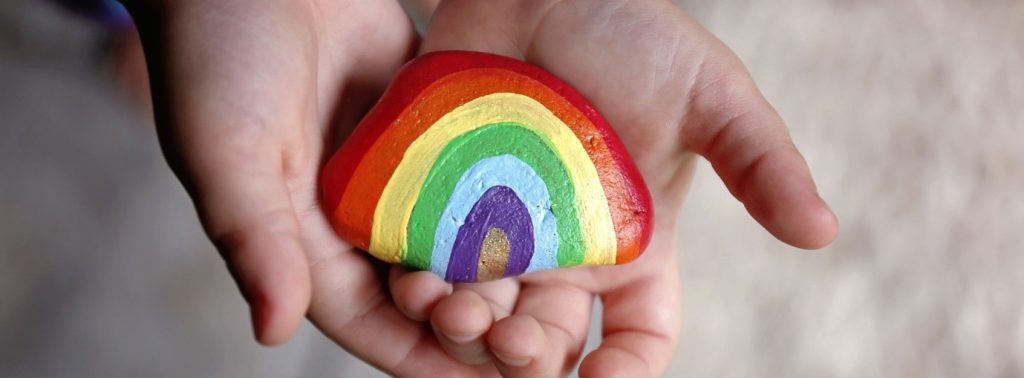Written by Chris Drewery, Project Support Intern at Play Scotland
The Summer Holidays are here! Now that your little ones have all the time in the world to play, we’ve collected more ideas to engage them in creative and active outdoor play! Be sure to use sun cream and stay hydrated to keep safe while having fun in the sun!
 Learn to skip pebbles
Learn to skip pebbles
Skipping pebbles is an impressive skill to build, and hunting for suitable pebbles is fun on its own! It can take a while to perfect, but if you keep trying, it’s a skill you’ll keep for life.
What you need
- Flat, light pebbles
- A calm body of water
What to do
- Hold your pebble with your thumb on top and middle finger on the bottom, with your index finger along the edge.
- Face the water at an angle with your knees slightly bent and your throwing arm behind you, with your elbow at your side.
- Bend your wrist back, whip your arm forward, and let go, keeping the flat side of the stone parallel to the water. Try to flick your wrist to give the pebble a spin as you release it.
- Keep trying and see how many times you can make it skip!

Build Sandcastles
Sandcastles can be any shape or size! You can use anything from a plastic cup to a bucket to decide what size you want your sandcastle to be, and you can build as many as you want, using whatever natural resources you find on the beach to decorate.
What you need
- Damp sand
- Spade
- Bucket
- Seashells/stones/seaweed to decorate.
What to do
- Start building your castle on damp sand away from the shoreline. If the sand is too dry, add water.
- Using your hands or your spade, fill your bucket with sand until it’s full. Quickly flip the bucket and place flat on the sand.
- Hit the top of the bucket with your spade to make sure the sand hasn’t stuck to the bucket, then carefully lift the bucket off to reveal your castle.
- You can also build a moat around your castle and decorate using whatever you find on the beach.

Climb trees
Climbing trees is very fun but can be quite a risky activity. It would be a good idea for children to start with smaller and easier trees, but they can quickly build confidence in their skills.
Children are very good at judging risk for themselves. Adults, you can help by asking questions like: Do you feel safe and strong? Do you need a rest? Notice how that branch is thinner than the others; do you feel stable there?
By calmly supporting children in risky play, you are helping them to further develop their ability to judge risk, build their physical skills, and have fun challenging themselves!
What you need
- A suitable tree
What to do
- Choose a sturdy tree with a branch low enough for you to either step up or reach.
- Keep close to the trunk of the tree, and grip branches near the trunk.
- Use your legs to push yourself up. Make sure to only climb as high as you’re comfortable with!

Build a cairn
Cairns have been used since prehistoric times as route markers and landmarks; they can be as small as only a few rocks high, but some are big enough to form artificial hills. They can also be used as a fun art or building project on a day on the beach or in the woods.
What you need
- Flat rocks
What to do
- Choose either a large, flat stone, or an even area of ground, to start building.
- Place your flat rocks on top of each other, building a tower as tall as you can!
- Add smaller pebbles in the gaps to give it more support.

Paint rocks
Painting rocks is a fun way to create new toys, to add colour to your home and garden, or to place in your neighbourhood for other people to find and appreciate. It’s easier if you start with larger rocks to give you more room to paint. While you can plan your ideas before you start, it can be fun to base your painting on the shape of the rock- for example, you can paint an orange slice on a circular rock.
What you need
- Rocks/pebbles
- Pencil
- Paint
- Paintbrush/stamp/sponge
What to do
- Wash and dry your stones.
- Sketch out a design using your pencil- it could be a building, a human, a bug, whatever you’d like- and then paint.
- Use them as decorations, toys, or place them around your neighbourhood.
We love getting outside and playing in nature! How many of these play ideas have you tried before? Let us know your favourite summer activities on Twitter, @PlayScotland. For more summer ideas, visit our Water Play section on our website!





